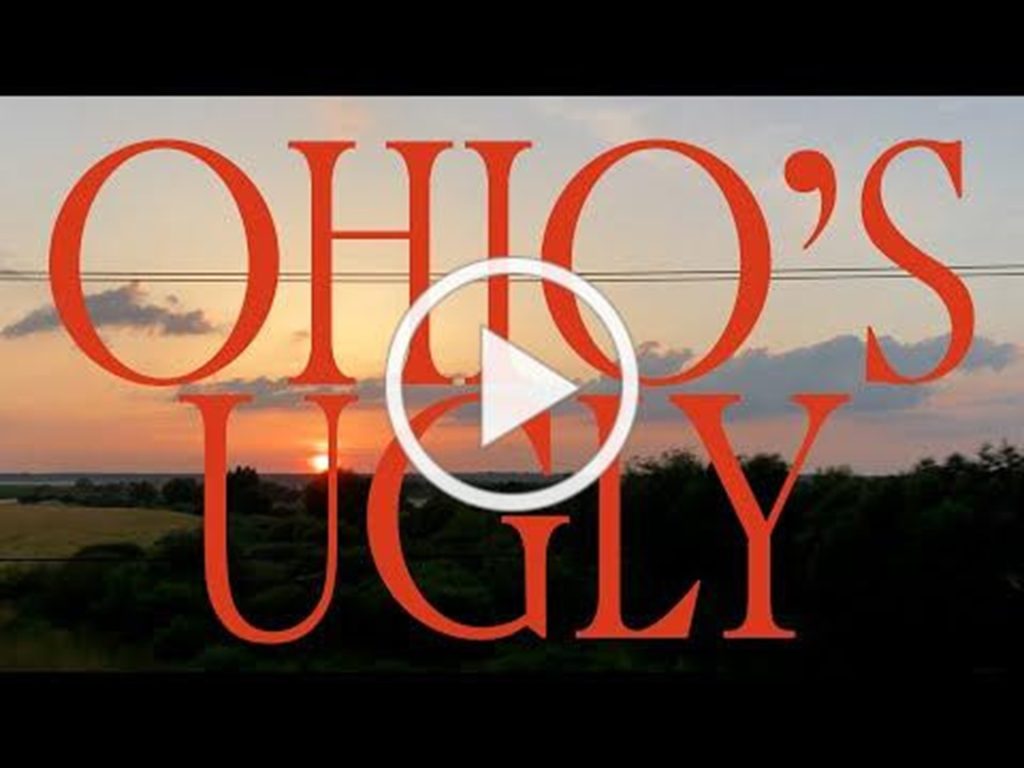Article Contributed by Shore Fire Media
Published on June 15, 2025

Today, Caamp shares the official video for “Ohio’s Ugly” — the Ohio natives’ tongue-in-cheek nod to their home state.
“It’s a song about falling in love with a girl and wanting to pull her back to Ohio,” Caamp’s co-founder and frontman Taylor Meier explains. “People don’t understand why we’re still here, but anybody from the Midwest will tell you there’s a magic to it. I travel all over the world now, but nothing beats coming home.”
Comprised of all home videos of the band from the past decade+, the seriously wholesome video is a celebration of their growth, bond, and friendship over the years. From starting the band in Athens, OH while Meier attended OU to selling out Red Rocks and Columbus’ Nationwide Arena and earning their fourth No. 1 AAA and Americana radio single, the band’s bond is stronger now than ever, and the video highlights some of their happiest memories just being together.
The video was shot by Caamp & friends and edited by Benjamin Schwaeber — watch it above and here.
Ohio’s Ugly is one of the standout tracks from Caamp’s just-released fifth studio album, Copper Changes Color (Mom+Pop Music), which debuted on Spotify’s Top 10 Albums: Debut USA. The album – which Garden & Gun praises for its “Strokes-like strut, all clanging electric guitars at a punchy clip” while still nailing “the sweet spot of Caamp’s trademark folk and delicate banjo beneath Meier’s distinctive baritone” – is both a reflection on growth and evolution and a celebration of the dreams and bonds that endure.
Listen to Copper Changes Color here
The band recently celebrated their fourth No. 1 single on AAA and Americana radio with “Let Things Go.” Caamp also wrote and recorded “And It’s Gone” as the main title theme for Stick, the just-released AppleTV+ original sports comedy starring and executive produced by Owen Wilson that is currently the #1 show on AppleTV+.
Caamp recently kicked off their 2025 US Tour with sold-out shows in Austin, St. Louis, Chicago (two nights) and will play a sold-out show in their home state tonight in Cleveland. The band will continue their 30+ date run with shows in New York City (sold out), Washington DC (first night sold out), Los Angeles, Nashville (sold out) and more. Plus, last week they announced their 2025 UK & Europe Tour, which will see the band hit 11 markets starting October 13 in Madrid, Spain.
Copper Changes Color Tracklist:
Millions
One True Way ft. Madi Diaz
Brush
Porchswing
Fairview Feeling
Shade
Waiting Up (For You)
Mistakes
Ohio’s Ugly
Living & Dying & In Between
Drive
Caamp 2025 Tour Dates:
June 12 | Jacobs Pavilion | Cleveland, OH – SOLD OUT+
June 14 | MGM Music Hall at Fenway | Boston, MA – SOLD OUT+
June 15 | MGM Music Hall at Fenway | Boston, MA – SOLD OUT+
June 18 | Westville Music Bowl | New Haven, CT+
June 20 | The Anthem | Washington, DC – SOLD OUT+
June 21 | The Anthem | Washington, DC+
July 16 | The Greek Theatre | Los Angeles, CA+
July 18 | Santa Barbara Bowl | Santa Barbara, CA+
July 19 | The Greek Theatre at UC Berkeley | Berkeley, CA+
July 22 | Ford Idaho Center Amphitheatre | Nampa, ID+
uly 24 | Granary Live | Salt Lake City, UT+
uly 26 | Fiddler’s Green Amphitheatre | Greenwood Village, CO – SOLD OUT+
July 29 | Big Sky Brewing Amphitheatre | Missoula, MT~
Aug. 1 | Dune Peninsula | Tacoma, WA – SOLD OUT~
Aug. 2 | Hayden Homes Amphitheater | Bend, OR~
Aug. 26 | St. Augustine Amphitheatre | St. Augustine, FL#
Aug. 28 | Asheville Yards | Asheville, NC#
Aug. 30 | Red Hat Amphitheater | Raleigh, NC – SOLD OUT#
Aug. 31 | Live Oak Bank Pavilion | Wilmington, NC#
Sept. 4 | Ascend Amphitheater | Nashville, TN – SOLD OUT^
Sept. 5 | Fox Theatre | Atlanta, GA – SOLD OUT^
Sept. 7 | Skyla Credit Union Amphitheatre | Charlotte, NC – SOLD OUT^
Sept. 10 | Skyline Stage at the Mann | Philadelphia, PA^
Sept. 12 | Radio City Music Hall | New York, NY – SOLD OUT%
Sept. 13 | Radio City Music Hall | New York, NY – SOLD OUT
Oct 13 | Mon Live | Madrid, Spain
Oct 14 | Razzmatazz 2 | Barcelona, Spain
Oct 17 | Santeria Toscana 31 | Milan, Italy
Oct 19 | Carlswerk Victoria | Cologne, Germany
Oct 20 | Huxley’s Neue Welt | Berlin, Germany
Oct 22 | TivoliVredenburg | Utrecht, Netherlands
Oct 23 | Café de la Danse | Paris, France
Oct 26 | QMU | Glasgow, Scotland
Oct 27 | O2 Ritz Manchester | Manchester, United Kingdom
Oct 29 | O2 Forum Kentish Town | London, United Kingdom
Nov 1 | The National Stadium | Dublin, Ireland
* denotes Blind Pilot as direct support
+ denotes Whitney as direct support
~ denotes Futurebirds as direct support
# denotes Fruition as direct support
^ denotes Atta Boy as direct support
% denotes Madi Diaz as direct support
Italics denote just-announced UK & Europe Tour